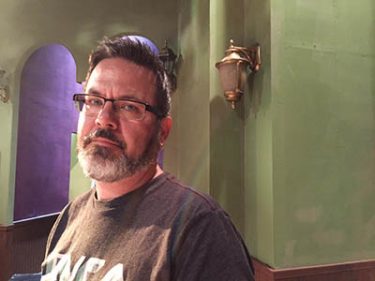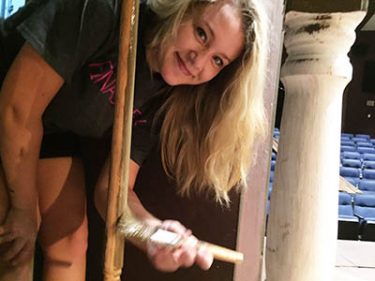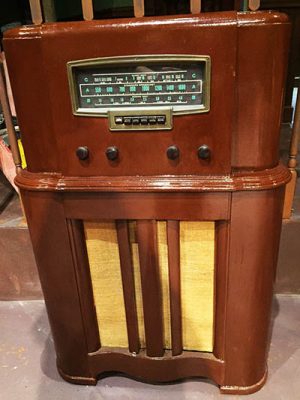Story and photos by Laurie Merrill
GCU News Bureau
It’s a question as old as the quandary it represents: How do you put a new spin on a time-worn tale?
William Symington, College of Fine Arts and Production assistant dean and faculty scenic designer, grappled with that very challenge in creating the set for the “The Mousetrap,” the longest running play in history.

Audience members can see Symington’s solution when COFAP’s production of the play, written by Agatha Christie and first performed on stage in 1952, opens Friday at Ethington Theatre.
Tickets to the show, which runs two consecutive weekends, can be purchased here. GCU students get in free with identification.
“Artists interpret,” Symington said. “We decide what the story is about and what the key moments are, and this is something we call ‘concept.’ It’s not plot — plot is what happens — it’s what the story is trying to tell us. It’s a point of view, a moral and ethos, a communication of human experience.”
Whether designing the set, lighting, costumes, props and so forth, each artist has something to say about the concept, and each uses the medium that is his or her specialty to say it, Symington said.
A writer creates a picture in your mind. A painter begins where words leave off.
In theater, designers “reach into peoples’ psyches and pull out the parts that help tell the story,” he said.

As set designer, Symington uses such tools as paint, scenery, furniture and decorations to create eras, periods and locales.
“The important thing is the story and the concept and to create a space to tell it in,” he said.
If portraying a grand setting, he might make things tall and big, while he might do the opposite to depict an oppressive setting.
He might choose a concrete surface to reflect a cold, abrasive setting, or if designing a 1970s set, he might use colors such as harvest gold and burnt sienna. A hot apple pie might appear in a scene at grandmother’s house.
For "The Mousetrap," the concept is “hidden,” as befits a whodunit murder mystery.

The story takes place in a former abbey that has been turned into a bed and breakfast. It’s meant to be a drab place of faded glory. Symington used darker wood, velvet cloth, dusty curtains and antique furniture to show this.
The set has certain have-to-have things because the script refers to them: a huge window, big fireplace and snow outside. On Ethington’s smaller stage, these were somewhat difficult to create.
But the rest of the set’s secrets can’t be revealed here. The set contains unknown things that the audience can’t see or doesn’t know about. There will be copious use of shadow and dimness and things that are hiding.
“Viewers expect to be surprised by a whodunit,” he said.
Contact Laurie Merrill at (602)639-6511 or [email protected].















